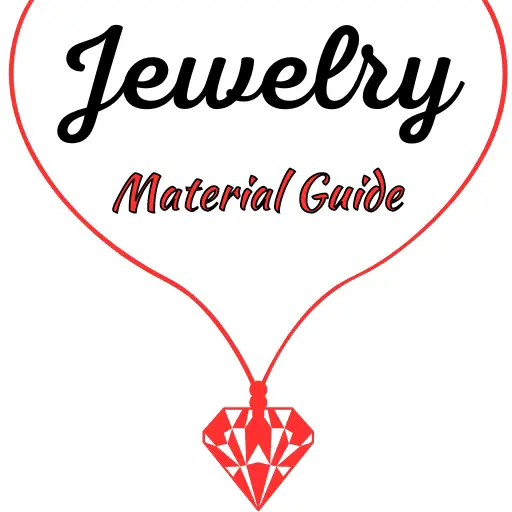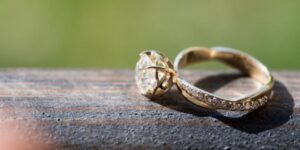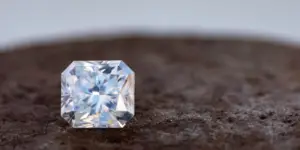Yellow center stones, or just yellow gemstones in general are quite a popular choice for jewelry, and they make some excellent white diamond alternatives for engagement rings. So let’s talk two of the best yellow gemstones out there: yellow diamonds vs yellow sapphires. We’ll discuss color, clarity, sparkle, prices, and how to make that yellow stand out even more.

Yellow diamond vs yellow sapphire
Yellow diamonds are more expensive than yellow sapphires, but they sparkle much more than the sapphires. Both are easily found as natural or lab grown versions, and both are often treated (irradiated or heat treated) for better color. Sparkle, price, and hardness are the biggest differences between yellow diamonds and yellow sapphires. If you’re going for a very colorful gemstone then yellow sapphires are a better and more affordable gem. If you’re also aiming for sparkle, you will appreciate a yellow diamond more but will pay about 10 times more for it.
What is yellow diamond ?
Yellow diamonds are a type of diamond with significant nitrogen amounts within the carbon structure, leading to a very strong and noticeable yellow color. The yellow hue is present in all diamonds, but most noticeable as you get closer to the D-Z color grading scale. Diamonds that have a yellow color stronger than the GIA-approved Z color cross over into fancy diamond color territory.
Fancy color diamonds are any color other than white, including yellow, pink, red, blue, green, purple, grey, and so on. The color grading system for fancy color diamonds, including the yellow ones, ranges from:
- fancy light
- fancy
- fancy intense
- fancy vivid
- fancy deep
- fancy dark
This system takes into account the fact that a diamond’s color is not just it’s hue (yellow, green, blue, red, etc), but also intensity (more or less saturated), and brightness (lighter or darker). So it’s a more complex scale but it make a lot more sense once you look at the GIA color grading booklet.

What is yellow sapphire ?
Yellow sapphires are a type of corundum with more trace amounts of iron, and the ones that have a very slight orange/reddish hue also have a much smaller amount of chromium (red). In short, yellow sapphires are simply another version of sapphires, and they’re a bit rarer than the blue sapphires.
Yellow diamonds are stronger than yellow sapphires
One of the key differences between yellow sapphire and yellow diamonds is their hardness. Yellow diamonds are still diamonds, and are still the strongest material, stronger than sapphires. On the Mohs scale you’ll find diamonds score a 10/10 while sapphires score a 9/10.
Both are very hard, very strong gemstones and are perfect for engagement rings or gemstones on jewelry that you’ll wear every day. Neither diamonds nor sapphires will scratch easily, and you can confidently wear them in rings, and bracelets. That being said, diamonds are still longer-lasting than sapphires.
Yellow sapphires are more affordable than yellow diamonds
When you’re looking to buy the perfect yellow diamond or yellow sapphire, you likely have a budget in mind. Well, chances are the yellow diamond will very often go way past your budget. These are some of the most expensive diamonds out there, particularly because they’re so colorful. And of course, yellow sapphire are always a more affordable option. Let’s take a look at a few examples.
A 1 carat VVS1 diamond sells for about $4,400 per carat, for a Fancy Light color. That same diamond with the same specs, but bumped up to Fancy Intense sells for $6,700, and if we go even higher at Fancy Vivid it sells for roughly $33,800 per carat. And, the higher the carat the higher the price, just like with white diamonds.
Meanwhile eye-clean yellow sapphire at 1 carat sell for about $575 per carat for a Medium Light (approx. Fancy Light in yellow diamonds). The same sapphire sells for approximately $650 per carat for a Medium Intense yellow, and about $745 for a Vivid yellow. The differences in price between sapphire color intensities are not as dramatic as diamonds.
X, Y, Z white diamonds are a cheaper option while still looking yellow
Want a yellow diamond but can’t realistically afford a fancy color one ? One of the best workarounds is to ask your jeweler for their X-Y-Z diamond range. Those are still classed as white diamonds, but they have noticeable yellow color. The upside is they’re far more affordable than G-H diamonds, and even the first grade of fancy diamonds (fancy light). The downside is they’re so much more difficult to actually find, since the demand for them is very low.
Read also: Do Diamonds Turn Yellow ?
Yellow diamonds still sparkle, yellow sapphires do not
When you’re buying yellow diamonds or sapphires you’re likely buying them for their beautiful color. But the diamonds still sparkle, even if a little less than a regular white diamond. The yellow within the diamond may take away some of the brilliance and fire, but they are still noticeably sparkly.
One thing to note, you’ll usually find yellow diamonds in radiant, cushion, oval, and crushed ice cuts. These tend to concentrate color and offer much smaller facets so smaller sparkles.
Meanwhile yellow sapphires only throw flashes of light, and may have a lighter yellow where a diamond would have brilliance. Keep in mind that yellow sapphires tend to be a bit cloudy, so not exactly eye-clean.
Clarity is not the be-all-end-all for sparkle, but it does matter a lot. So when you’re looking for yellow sapphires or diamonds, make sure they are eye-clean, including the diamond, regardless of their actual clarity grades.
Both yellow diamond and sapphires are usually lab-grown and treated
Would you like to ensure your gemstone is natural? You’ll easily find both natural and lab-grown yellow sapphire and yellow diamonds. These gems are not difficult to produce and they look like the natural versions of yellow sapphire and yellow diamond.
The upside to getting a natural yellow diamond or sapphire is that they’re, well, natural. Whatever color you see is what nature bestowed upon them. But is it ? Even natural gems, be they diamond or sapphires, are often treated for color.
If you’ve got a natural yellow diamond, you should check its lab report to see if the color is natural or enhanced. Enhanced yellow diamonds are faint diamonds that have been irradiated to produce a stronger yellow color.
If you’ve for a natural yellow sapphire, look at the lab report and you will find it’s either non-treated or heated. Most colored gemstones on the market are treated for color, but especially sapphires. To get a deeper color and to get better clarity, and the report will always show you whether the stone has been treated in any way or not.
As for lab-grown gems, they can easily be influenced as they form to get a very strong, vivid yellow color. These are very rarely treated after they’ve finished forming, since their color has already been influenced.
Now all this being said, does it mean lab grown and treated yellow sapphires and yellow diamonds are bad or less impressive? Of course not. It means they are made much more affordable and easier to access for more people. But, it also means that whichever 100% natural stone you get, its price will be at least double the one of a lab grown and/or treated version.
How to intensify the yellow in your diamond or sapphire
Set your diamond or sapphire in yellow gold if you want to bring out a stronger yellow. Diamonds and sapphires, but diamonds especially, reflect some of the colors that immediately surround them. Most of the time this means the color of their setting metal. Not only are there prongs on the side, they are also on the underside, and thus reflect even more into the gems. So, they can easily influence the apparent color of your center stone. A yellow setting metal will infuse more yellow into the stone.
Keep in mind that 18k yellow gold is a warmer, more pigmented yellow than 14k gold so it will work better. But it is also a bit softer than 14k yellow gold. For this reason you may want to check your 18k gold ring a bit more often for any loose prongs and/or have it polished every now and then since it will collect scratches much faster.
Yellow gold will stand out less and actually blend in with the diamond or sapphire, so you’d get a nearly invisible setting. And if you really want to bring out they yellow, a white diamond halo or white diamond side stones will form a very beautiful contrast. The best part ? With such a decidedly yellow center, you don’t need a halo of D diamonds, some I-J diamonds will work just fine. They will look crisp white in comparison.
What’s the best cut for a yellow diamond or sapphire ?
Anything crushed ice, brings out color. Crushed ice cuts are modified versions of ovals, cushions, and radiants with an extra set of facets on the pavilion. This creates much smaller sparkles, and the effect is more like glitter vs sequins, or crushed ice vs chunks of ice.
Crushed ice cuts bring out more brilliance than fire in a diamond, and that will also concentrate the body color of your diamond. So in short, a crushed ice cut, of any sort, will look excellent with a yellow diamond. There will be a bit of fire there as well, but less than brilliance and your color will pop.
Anything elongated (oval, radiant, cushion) as they concentrate color towards the edges. This also has to do with the crushed ice effect, except this time it’s not intentional. You know how you always hear to stay away from ovals and radiants if you’re going for a white diamond ? That’s because the crushed ice effect at the tips of the diamond, because of the way the facets are arranged. There is no extra set of facets in these cuts, so the effect is lessened but it’s still there.
Princess cuts are another option since they also concentrate color, but they do this more towards the tips. Don’t go for step cuts or round cuts if you’re aiming to get the most saturated yellow. Step cuts will show you some windowing in the diamond or sapphire, and can easily detract from the color. Round cuts are quite boring on any other gem that a white diamond, moissanite, or cubic zirconia since they are there for the sparkle, not the color.

I’m the main author for jewelrymaterialguide.com. I started this site after we did tons of research before our wedding and noticed that there is information about rings, jewelry, and so on that is really hard to find on the internet.






